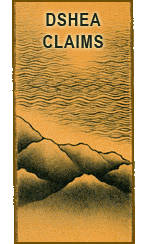DSHEA Tutorial: Definition Of Disease

Structure / Function claims don’t seem to be too difficult to come up with. The hard part is avoiding disease claims while making your product’s label or marketing materials compelling. So, let’s get clear on what a disease claim is.
The FDA uses the NLEA (Nutrition Labeling and Education Act) definition of “disease or health related condition”.
damage to an organ, part, structure, or system of the body such that it does not function properly (e.g., cardiovascular disease), or a state of health leading to such dysfunctioning (e.g., hypertension); except that diseases resulting from essential nutrient deficiencies (e.g., scurvy, pellagra) are not included in this definition
The reason that diseases due to nutrient deficiencies are removed from this definition is so that food products and certain dietary supplements can claim (and rightly so) to treat those particular diseases such as vitamin C to treat scurvy, you scurvy dog.
The actual wording of the DSHEA law permits statements that
characterize the documented mechanism by which a nutrient or dietary ingredient acts to maintain such structure or function.
This point really comes down to certain terms such as
“stimulate,” “maintain,” “support,” “regulate,” or “promote“
which can be appropriate when the statements do not suggest disease prevention or treatment. However terms such as
“restore normal” or “correct abnormal” function when the abnormality implies the presence of disease
is not allowed. An example might be a claim to “restore” normal blood pressure when the abnormality implies hypertension.
Additionally, if a claim implies disease treatment or prevention, it would not be an acceptable structure/function claim.
“maintains healthy lungs in smokers” would imply prevention of tobacco-related lung cancer and chronic lung disease. “Maintains healthy lung function,” alone, however, would be an acceptable structure/function claim.
Now anybody can imply that their dietary supplement treats disease without coming out and saying it. However, the FDA is hip to this and will not allow it. Here are some examples of implied disease claims:
“Relieves crushing chest pain” (angina or heart attack),
“prevents bone fragility in post-menopausal women” (osteoporosis),
“improves joint mobility and reduces joint inflammation and pain” (rheumatoid arthritis),
“heals stomach or duodenal lesions and bleeding” (ulcers),
“anticonvulsant” (epilepsy),
“relief of bronchospasm” (asthma),
“prevents wasting in persons with weakened immune systems” (AIDS) (acquired immune deficiency syndrome),
“prevents irregular heartbeat” (arrhythmias),
“controls blood sugar in persons with insufficient insulin” (diabetes),
“prevents the spread of neoplastic cells” (prevention of cancer metastases);
“antibiotic” (infections),
“herbal Prozac” (depression)
Why is this even important? The FDA believes that if we’re claiming to treat disease, people might not think to go to a health care practitioner when they need to. In their words:
permitting implied disease claims poses significant dangers to consumers with diseases. According to these comments, permitting implied disease claims on dietary supplements may cause consumers to delay or forego effective treatment for serious diseases without assurance that the dietary supplement that has been substituted is safe or effective for the disease.
Of course one could make equally reasonable arguments in favor of the dietary supplement’s ability to do what drugs do with less expense, less side effects, and more causal healing. However we aren’t here to debate this issue, the law stands as it is and the goal of these articles it to help TCM practitioners get into compliance.
What about poisonings?
FDA continues to believe that alcohol intoxication, like all
poisonings (mushroom, digitalis, or any drug overdose), meets the
definition of disease, albeit a transient disease.
So, how do you know for sure if your product is making a disease claim?
If the product claims to have an effect on a specific disease or class of diseases, it’s a disease claim. There are many more examples coming up in the “non-compliant workarounds” section.
Keep in mind that the fact that Chinese herbal formulas do treat cure, and mitigate diseases has nothing to do with DSHEA. The DSHEA law is not regulating what it does (presuming that the formula is in fact safe and effective) but rather what we claim. So, while we can use herbs to do everything that drugs do (such as treat disease), we simply can’t state this fact on our bottle labels or any publication that has any relationship with a purchase opportunity (including websites) for our products.
Perhaps someday we can create a class of medicines that allow for these claims based on what we all know is the case. Until then we have to follow the DSHEA law. Or see the AHPA for more on their ideas on how to fix this issue.
Next: exceptions to the definition of “disease”
 Last modified: August 20, 2009
Last modified: August 20, 2009  Tags: Claims, DSHEA В· Posted in: Claims
Tags: Claims, DSHEA В· Posted in: Claims
